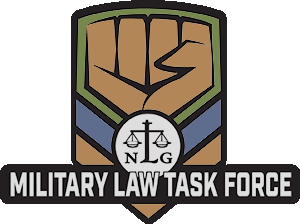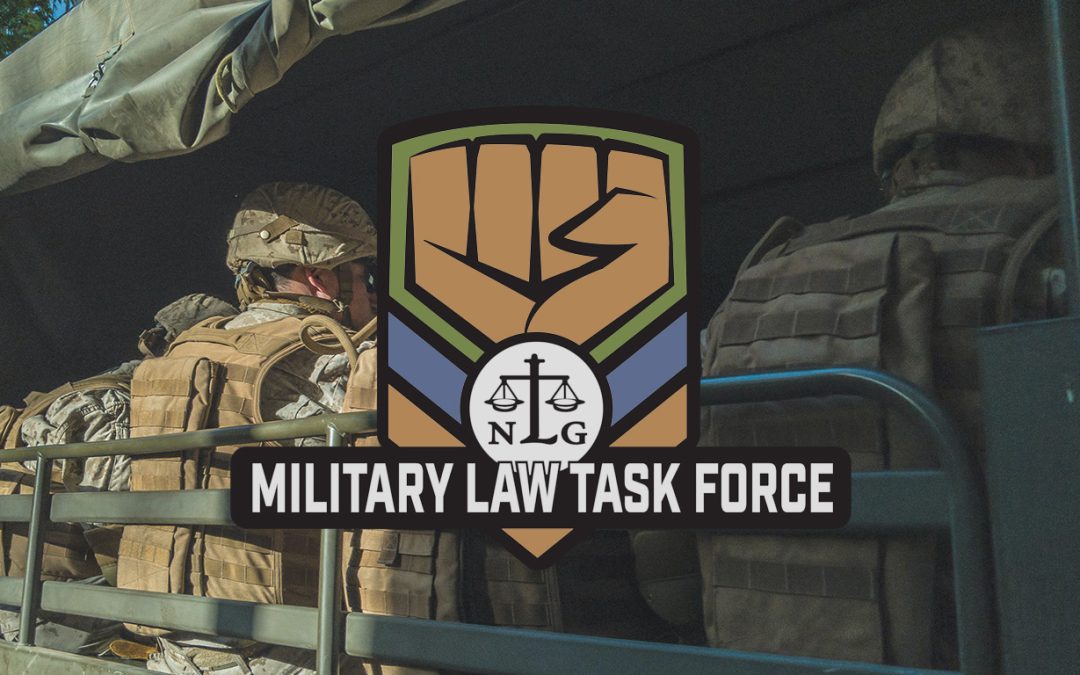BY KATHLEEN GILBERD
On May 2, 2019 the Department of Defense (DoD) released its congressionally-mandated report on sexual assault in the military for fiscal year 2018. The executive summary and introduction are available at nlgmltf.org/military–law/2019/military–annual–report–sexual–assault/. While the report praised existing practices to prevent sexual assault and discussed plans for additional actions in 2019, the data gathered in the report paints a bleak picture. Sexual assaults have risen significantly in number, prosecution of assaulters is limited, with fewer courts-martial, and retaliation against those who report assaults remains a serious problem.
The report relied extensively on a bi-annual “scientific survey” of approximately 100,000 military personnel. This showed a significant increase in sexual assaults of younger women (aged 17 to 24) from the last survey conducted in 2016, although the figures for male service members remained about the same. According to the survey, about 6.2 percent of servicewomen, or about 13,000 women, were assaulted in fiscal year 20l8, compared to 4.3 percent in 2016.
The numbers of women who reported sexual assaults to military officials, however, remained about the same as in the previous survey, with an estimated one in three members reporting their assaults.
“MILITARY CLIMATE” FACTORS
The report acknowledged that “military climate” factors affected sexual assault rates, a relatively recent understanding for DoD. Servicemembers who faced sexual harassment, sexual discrimination or hostility in the workplace had an increased likelihood of sexual assault—women who experienced sexual harassment were found to be three times more likely than average to experience assaults, and men who experienced sexual harassment were twelve times more likely to be assaulted. The report also found that members who experienced incidents of sexual harassment had increased significantly—from 21.4 percent in 2016 to 24.2 percent in 2018.
According to the report, policy and training changes are planned to address retaliation. Yet prior changes to regulations have not reduced retaliation or provided real redress to its victims. Military culture continues to denigrate servicewomen in general and remains skeptical of harassment and assault reports. Many commands turn a blind eye to reports of retaliation, assuming that they are exaggerated or that there are other, legitimate reasons for actions which women merely perceive as reprisals.
REPORTING ISSUES
Military policy permits sexual assault survivors to make restricted (anonymous) or unrestricted reports of sexual assault. In the latter case, both the survivor and accused perpetrator are identified to the commanding officer and investigative agencies. In fiscal year 2018, 2,366 members made restricted reports, though 548 of those later converted to unrestricted reports, allowing, among other things, prosecution of the assaulters. According to the report, one change to this reporting system will take place in 2019. A “Catch a Serial Offender Program” is to be launched in the summer, allowing members making restricted reports to provide information about the assaulter and assault confidentially. Should investigators find a match to other assaults, the restricted reporter will be notified and offered the option to convert to an unrestricted report to allow prosecution for that offense.
In fiscal 2018, the military found sufficient evidence to take some form of disciplinary action against 65 percent of unrestricted (or converted) cases. According to the report, just under three percent of reported cases were unfounded, with evidence showing that the crime did not occur or that the accused did not commit it. This figure is significantly different than the common military belief that women, in particular, frequently make false reports.
DISCIPLINARY ACTIONS AND OUTCOMES – NUMBER OF COURTS-MARTIAL IS LOW
Appendix B to the report gave some details of disciplinary actions and outcomes. The statistics are difficult to align, since some court-martial proceedings were begun but not completed in fiscal 2018, some cases were outside military jurisdiction and/or prosecuted by civilian authorities, and some survivors declined to take part in prosecutions. The report looked at the 668 cases in which courtmartial charges were preferred in 2018, 482 of which were completed. Of these, 18 percent had charges dismissed prior to trial, and 34 percent resulted in acquittal on all charges. 203 accused were convicted of at least one charge at trial; only 67 percent of these received punitive discharges. (However, DoD policy requires administrative separation proceedings for assaulters who are convicted but not sentenced to a punitive discharge).
An additional 267 cases were handled at non-judicial punishment under Article 15 of the UCMJ. In 74 of these cases the non-judicial punishment was subsequently used as a basis for administrative discharge. Additional cases were subject to discharge proceedings without any disciplinary proceedings at all. In total, 108 members were administratively separated for charges relating to assaults (another 10 cases were pending when the report was written). Only 48 of these individuals received other than honorable discharges.
While it is difficult to correlate substantiated reports with disciplinary action, it is obvious that the number of courts-martial is low, particularly given that less than three percent or reports were determined to be unfounded by commands. Many commands continue to find ways to avoid or limit prosecutions, and some practitioners have noted a “backlash” effect in which court-martial panels are overly skeptical of assault charges. The former problem is the primary reason that legislation removing the convening authority from commands has been repeatedly proposed.
RETALIATION REMAINS A SERIOUS PROBLEM
In the last few years, the military has recognized — or been required by Congress to recognize — that retaliation for sexual assault complaints is a serious problem. The report states that research “continues to find that some Service members experience unhelpful reactions and negative outcomes” after reporting assaults. Specifically mentioned are “social exclusion,” career disruption and unfavorable personnel actions. These problems continue to plague reporters despite recent changes to military regulations intended to prohibit and penalize reprisals. The 2018 survey found that about 43 percent of women who reported assaults “perceived negative experiences associated with reporting sexual assault,” and 21 percent perceived such experiences that met DoD’s definition of retaliatory behaviors (actions consistent with efforts to deter reporting or assisting in prosecution of the assaulters).
The report claimed that those who reported assaults felt a good degree of confidence in the personnel assigned to provide support and the military’s handling of cases, with over 70 percent of reporters expressing satisfaction. Reporters felt less satisfaction — less than 50 percent—for the behavior of superiors in the chain of command, military law enforcement, and the DoD Safe Helpline.
While Special Victims Counsel (military attorneys assigned to assist assault survivors) can be very helpful in retaliation cases, many of them consider this outside their purview. Victims Advocates and Sexual Assault Response Coordinators (SARCs) are sometimes supportive when retaliation occurs, though their authority is limited. More useful solutions to these problems have been support from independent attorneys, advocates, and organizations such as Service Women’s Action Network (SWAN), Protect Our Defenders, and the Task Force.
For more information, the memo Challenging Military Sexual Violence is available on the MLTF website – nlgmltf.org/military–law–library/publications/memos/military–sexual–violence/
Kathleen Gilberd is a legal worker in San Diego, and the executive director of the Military Law Task Force.



